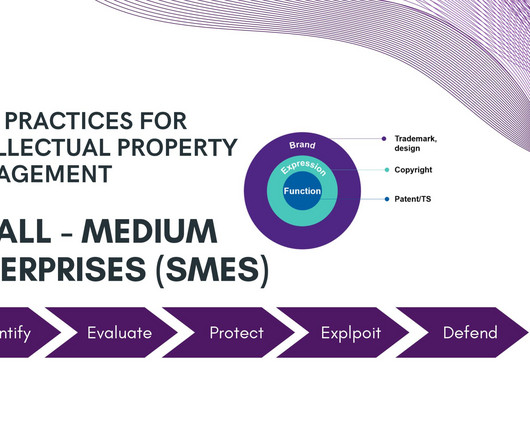Best Practices for Intellectual Property Management in Small to Medium Enterprises (SMEs)
Intepat
MAY 28, 2024
It includes creations of mind, such as inventions, literary and artistic works, designs, symbols, and names used in commerce. These intellectual outputs are seen across industries, including creative and cultural sectors. What is Intellectual Property Management? This is where IP management steps into the picture.












Let's personalize your content